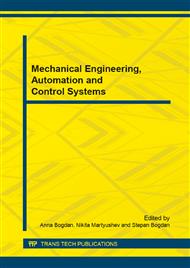p.53
p.59
p.65
p.70
p.75
p.79
p.85
p.92
p.97
Development of Parameters Describing Heterogeneous Hardened Structure
Abstract:
The technique was developed with the purpose of definition of parameters for surface layer uniformity after mechanical hardening. It was found that one of the most effective methods of surface plastic deformation that provide precise adjustment of uniformity level of surface layer hardening is presented by static-pulse treatment technique. This method helps to develop hardened surface layer 8 mm deep with virtually uniform or heterogeneous structure.
Info:
Periodical:
Pages:
75-78
Citation:
Online since:
April 2015
Authors:
Price:
Сopyright:
© 2015 Trans Tech Publications Ltd. All Rights Reserved
Share:
Citation:


